Themed collection Protein Labelling

Protein labelling
Professor Eranthie Weerapana and Professor Lyn Jones introduce this Protein Labelling themed issue.

Mol. BioSyst., 2016,12, 1725-1727
https://doi.org/10.1039/C6MB90019D
Understanding the chemically-reactive proteome
The reactivity of amino acid residues in proteins is context-dependent and difficult to predict.

Mol. BioSyst., 2016,12, 1728-1730
https://doi.org/10.1039/C5MB00760G
Peptide-tags for site-specific protein labelling in vitro and in vivo
Peptide-tag based labelling can be achieved by (i) enzymes (ii) recognition of metal ions or small molecules and (iii) peptide–peptide interactions and enables site-specific protein visualization to investigate protein localization and trafficking.
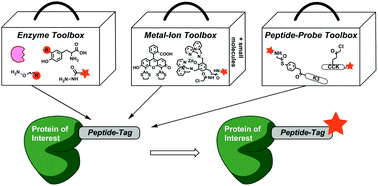
Mol. BioSyst., 2016,12, 1731-1745
https://doi.org/10.1039/C6MB00023A
A tyrosine-reactive irreversible inhibitor for glutathione S-transferase Pi (GSTP1)
Glutathione S-transferase Pi (GSTP1) mediates cellular defense against reactive electrophiles.
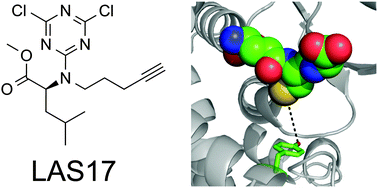
Mol. BioSyst., 2016,12, 1768-1771
https://doi.org/10.1039/C6MB00250A
Dual-labeling of ubiquitin proteins by chemoselective reactions for sensing UCH-L3
SUMO-fused and intein-fused protein expression systems have been combined to prepare a dual-color labeled ubiquitin sensor for detecting UCH-L3's activity.
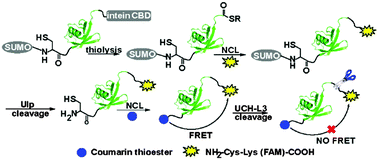
Mol. BioSyst., 2016,12, 1764-1767
https://doi.org/10.1039/C6MB00165C
Sortase-mediated labelling of lipid nanodiscs for cellular tracing
Lipid nanodiscs have broad applications in membrane protein assays, biotechnology and materials science.
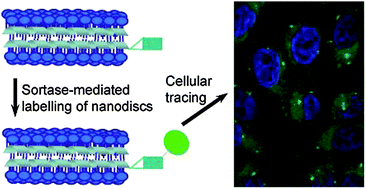
Mol. BioSyst., 2016,12, 1760-1763
https://doi.org/10.1039/C6MB00126B
Performance of optimized noncanonical amino acid mutagenesis systems in the absence of release factor 1
Unconditional deletion of RF1 in a genomically recoded E. coli enables multisite noncanonical amino acid incorporation by UAG suppression.
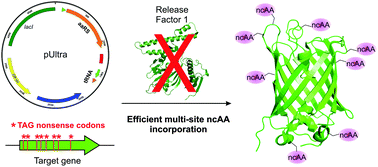
Mol. BioSyst., 2016,12, 1746-1749
https://doi.org/10.1039/C6MB00070C
Comprehensive mapping of O-GlcNAc modification sites using a chemically cleavable tag
A novel approach utilizing a chemically cleavable Dde-based tag is employed herein to quantitatively label and release O-GlcNAcylated proteins for the mass spectrometric identification of previously unknown glycosylation sites.
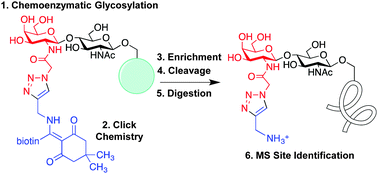
Mol. BioSyst., 2016,12, 1756-1759
https://doi.org/10.1039/C6MB00138F
Stabilization of bacterially expressed erythropoietin by single site-specific introduction of short branched PEG chains at naturally occurring glycosylation sites
Erythropoietin (EPO) with single small branched PEG chains installed by the Staudinger-phosphite reaction leads to enhanced solubility, stability and intact in vitro bioactivity.
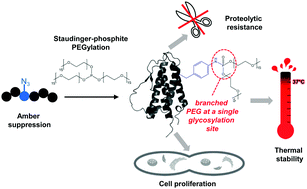
Mol. BioSyst., 2016,12, 1750-1755
https://doi.org/10.1039/C5MB00857C
A clickable glutathione approach for identification of protein glutathionylation in response to glucose metabolism
Clickable glutathione was used for analyzing the reversible change of protein glutathionylation in response to glucose metabolism and mitochondrial ROS.
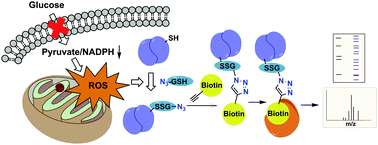
Mol. BioSyst., 2016,12, 2471-2480
https://doi.org/10.1039/C6MB00175K
Photo-crosslinking of clinically relevant kinases using H89-derived photo-affinity probes
H89-derived photo-affinity probes can be used to label clinically relevant kinases as well as to screen known and identify novel kinase inhibitors.
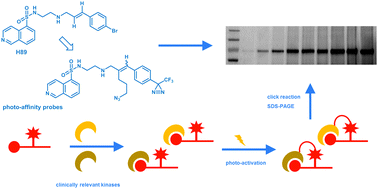
Mol. BioSyst., 2016,12, 1809-1817
https://doi.org/10.1039/C6MB00257A
Design and development of histone deacetylase (HDAC) chemical probes for cell-based profiling
Validation of novel chemical probes containing photoreactive crosslinking groups and biotin or click reporters is reported for the proteomic study of HDAC complexes.
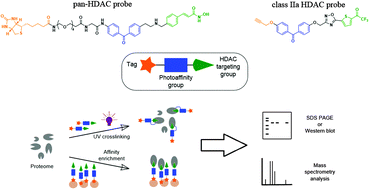
Mol. BioSyst., 2016,12, 1781-1789
https://doi.org/10.1039/C6MB00109B
Correlated S-palmitoylation profiling of Snail-induced epithelial to mesenchymal transition
Over-expression of the mesenchymal transcription factor Snail alters expression of many proteins. These changes are largely correlated with changes in S-palmitoylation, but in some cases are uncoupled.

Mol. BioSyst., 2016,12, 1799-1808
https://doi.org/10.1039/C6MB00019C
Benzimidazole covalent probes and the gastric H+/K+-ATPase as a model system for protein labeling in a copper-free setting
Synthesis and use of benzimidazole activity-based probes to validate target labeling and identify novel binding partners.
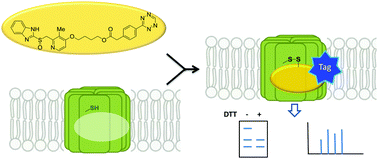
Mol. BioSyst., 2016,12, 1772-1780
https://doi.org/10.1039/C6MB00024J
An immunochemical approach to detect oxidized protein tyrosine phosphatases using a selective C-nucleophile tag
We report a simplified immunochemical approach to directly detect and quantify oxidized protein tyrosine phosphatases modified with dimedone.
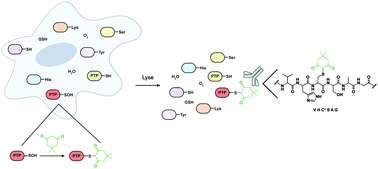
Mol. BioSyst., 2016,12, 1790-1798
https://doi.org/10.1039/C5MB00847F
About this collection
This themed issue, Guest Edited by Drs Eranthie Weerapana (Boston College, USA) and Lyn Jones (Pfizer, USA), covers the discovery, development and application of protein labelling to advance chemical biology. It includes some of the latest exciting research ranging from chemical mutagenesis, bioconjugation and site-specific labelling methods, over activity-based protein profiling, target identification and validation, to advances in –omics technologies underpinned by breakthroughs in protein labelling techniques, screening technologies and advances in pharmacological and therapeutic modalities.